‘The Atlas of Car Design’ chronicles 130 years of automotive art
Phaidon’s epic monograph ‘The Atlas of Car Design: The World’s Most Iconic Cars’ assembles a multistorey’s worth of precious metal from around the world
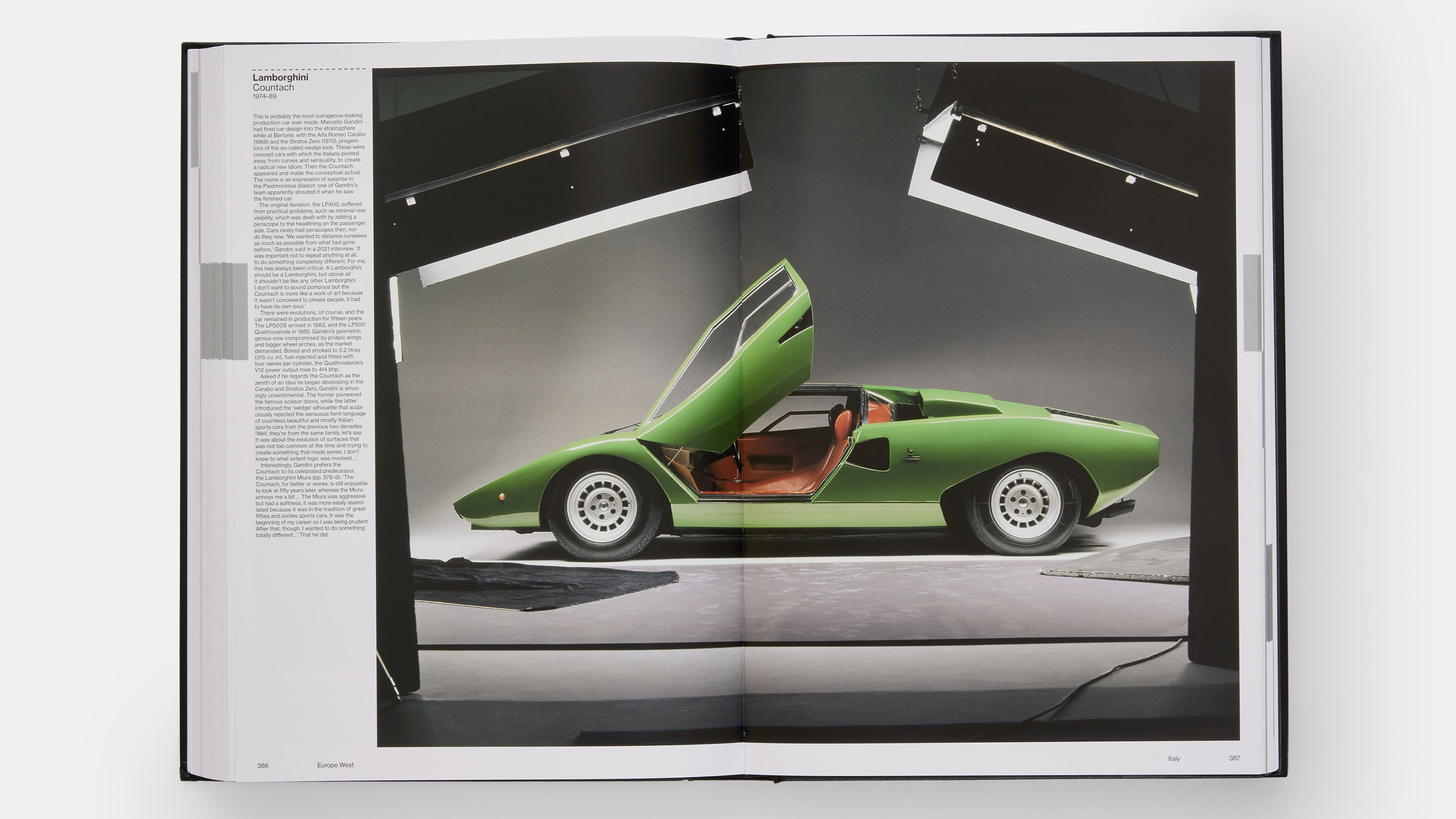
A comprehensive survey of car design is a daunting undertaking, but Phaidon’s new 568-page monograph is perhaps the best primer the subject has ever seen. Assembled by British motoring journalist and commentator Jason Barlow, with assistance from regular Wallpaper* contributor Guy Bird, The Atlas of Car Design: The World’s Most Iconic Cars contains no fewer than 650 entries chronicling the evolution of every facet of car design from 1893 to the present day.
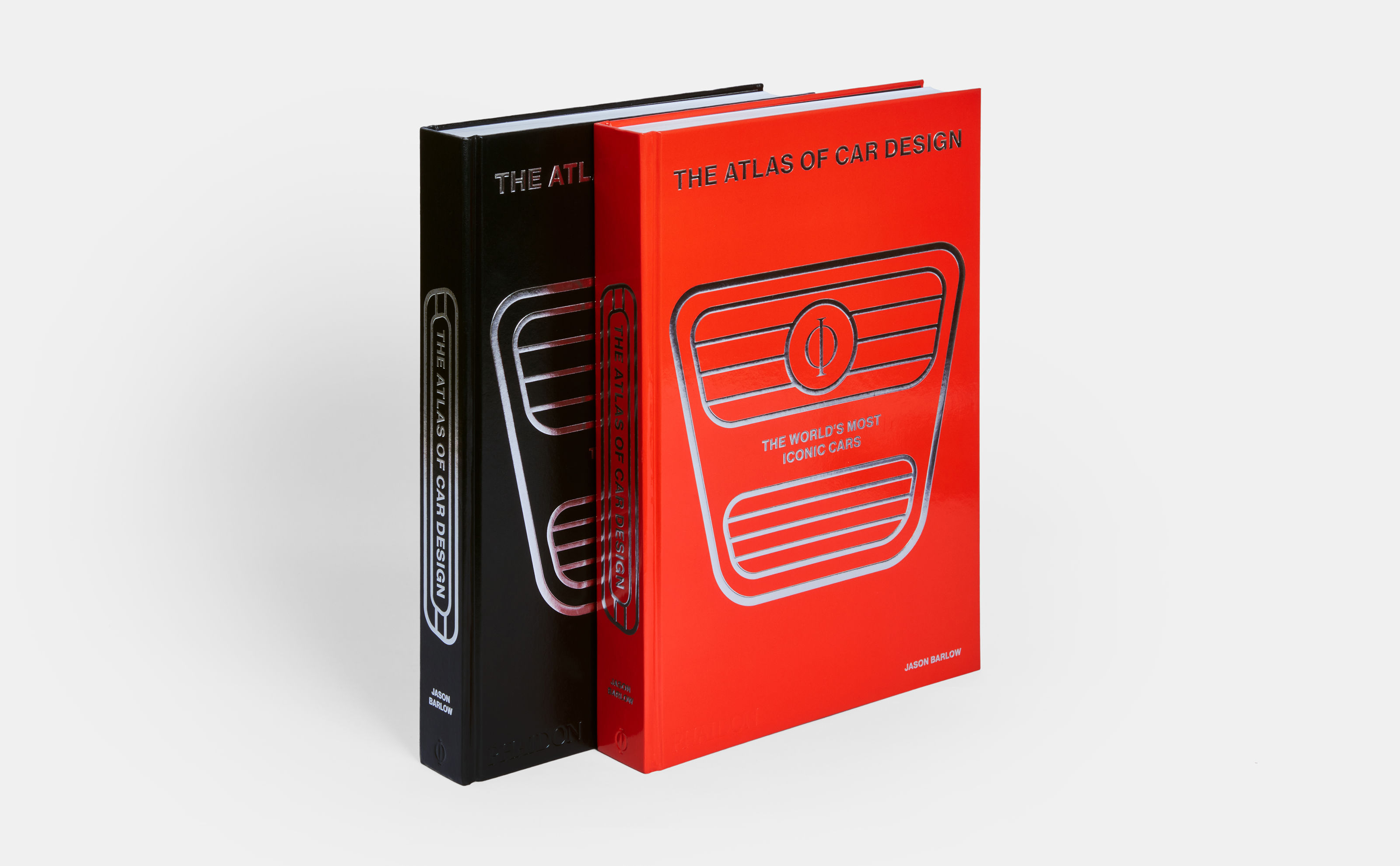
The Atlas of Car Design is available in Onyx Black or Rally Red
Unsurprisingly, western Europe provides the lion’s share of the content, while there are welcome diversions into South America and Eastern Europe. Barlow's (and Bird’s) expansive industry experience and contact list have turned up gems and nuggets about the design, development and consumer reception of every model; every car has a story to tell.
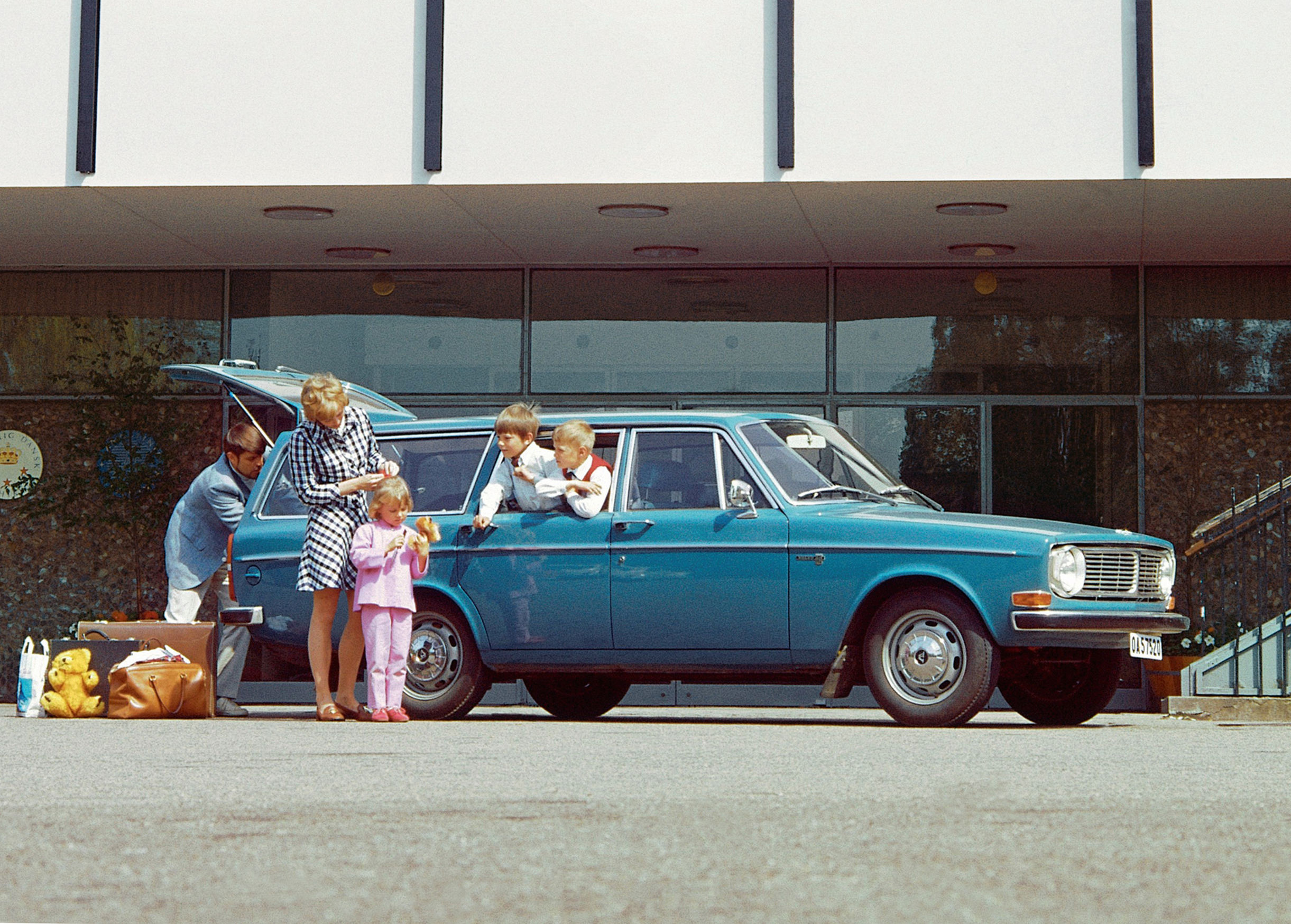
Volvo 140, 1966–74, used with permission of Volvo Car Corporation, from The Atlas of Car Design
The many models are also arranged in a visual chronology at the end of the book, along with a helpful glossary, giving a real overview of how different technologies and trends have been expressed by the industry, as it evolved through periods of increased visual sophistication and elaboration, with the line between design and marketing became blurred by media and mass consumption.
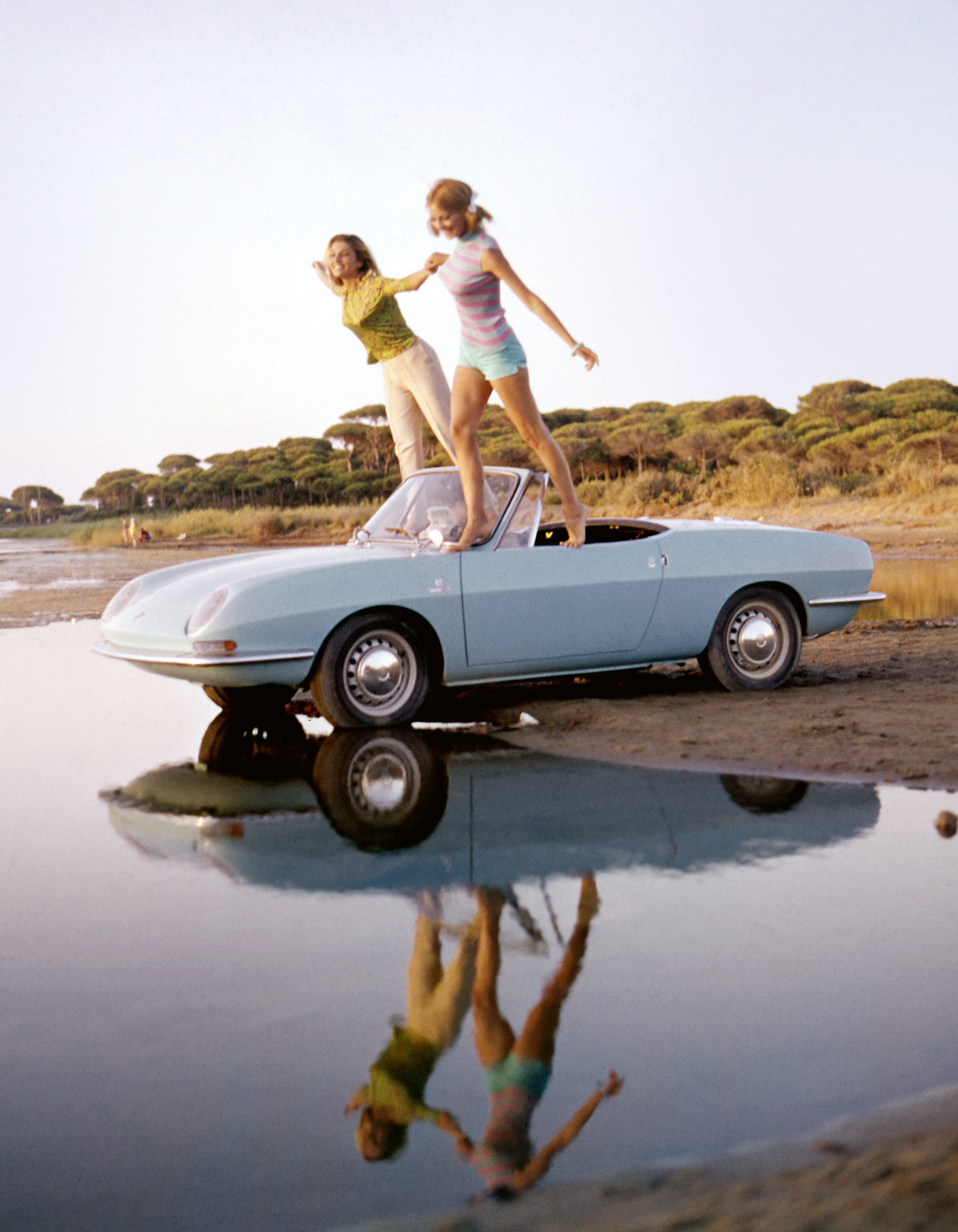
Fiat 850 Spider, 1964–73, Centro Documentazione Alfa Romeo – Arese, from The Atlas of Car Design
This is a monumental volume, available in two different finishes, a high-gloss Rally Red for fans of certain Italian exotica and Onyx, a form of black leatherette that’ll satisfy the more retro-minded. The latter are also catered for by the inspired use of archive imagery throughout – both publicity stills and advertising shots. Much of this reflects the (literal) fashions of the various eras, not to mention the photographic style and colour choices for paint and trim.
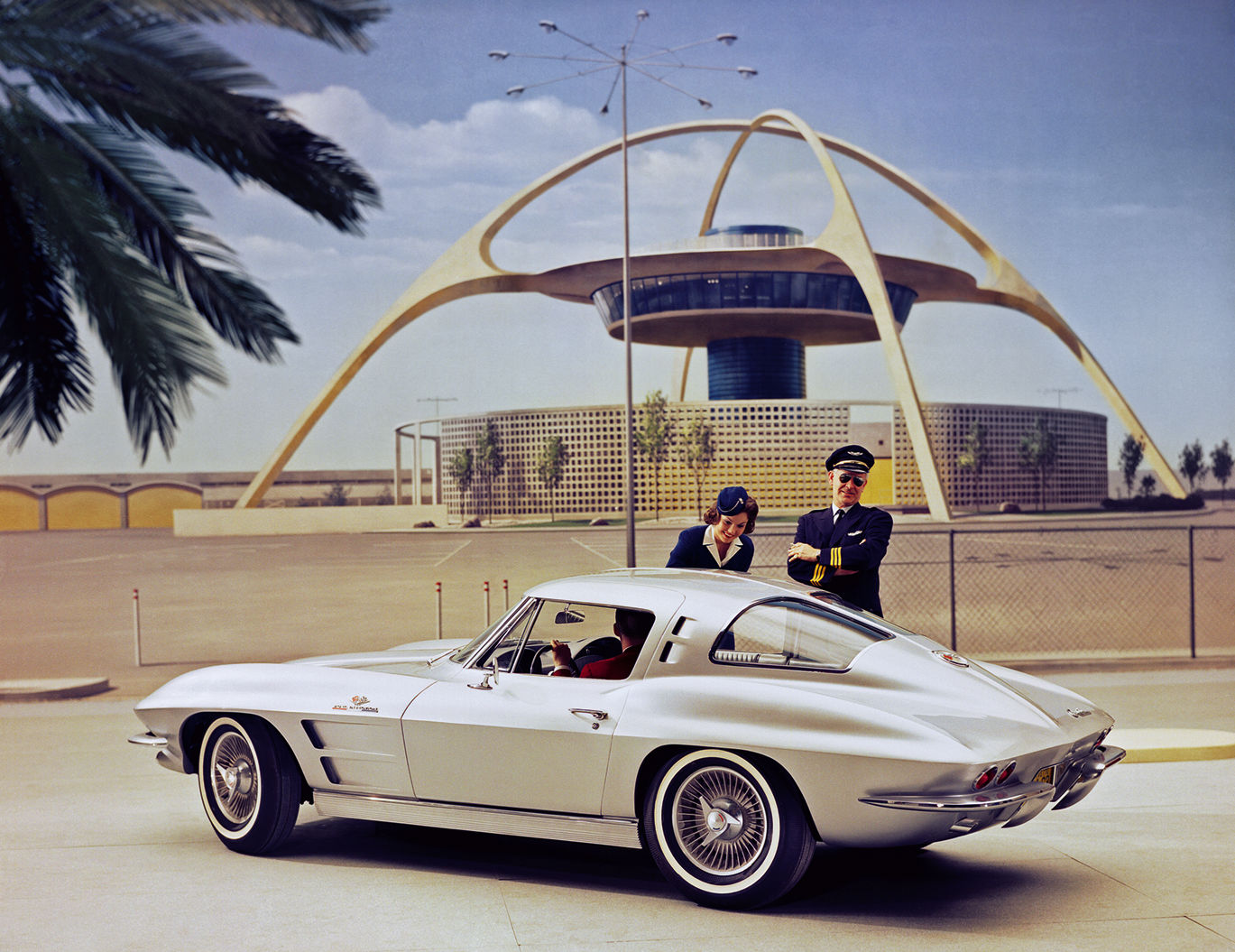
Chevrolet Corvette Sting Ray, 1963-7, General Motors, pictured in front of the then-newly opened Theme Building at LAX, by Langenheim, Pereira & Luckman, from The Atlas of Car Design
In total, 190 manufacturers are represented, a suitably diverse portfolio that doesn’t reflect today’s consolidated industry, where brands can be wholly divorced from their geographic and historic origins yet still embody vaguely defined statements about heritage and certain national characteristics.
The atlas’ scale ensures that all the usual suspects are present and correct, alongside forays and welcome diversions, like domestic models from 1970s Japan, or the tangled histories and alliances behind South American, Iranian and Israeli car brands. Highly recommended for anyone with even a passing interest in auto design.
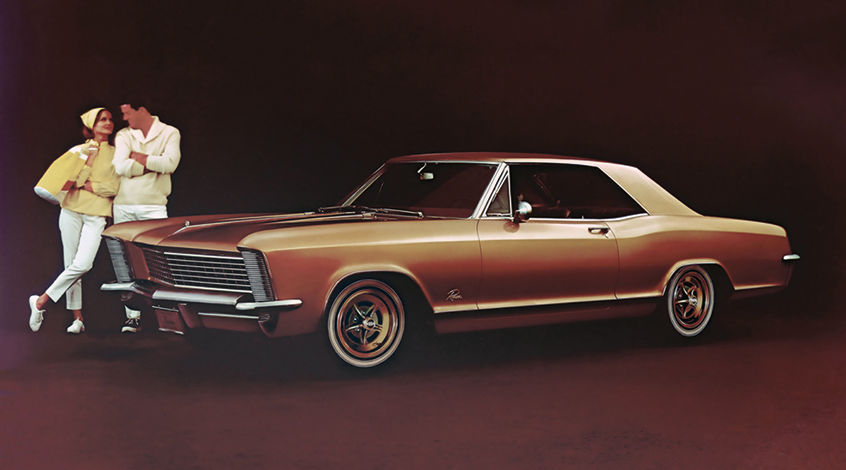
Buick Riviera, 1963-5 (Bettmann / Getty Images), from The Atlas of Car Design
The Atlas of Car Design: The World’s Most Iconic Cars, Jason Barlow with Guy Bird, and an introduction by Brett Berk, Phaidon, £100, Phaidon.com
Wallpaper* Newsletter
Receive our daily digest of inspiration, escapism and design stories from around the world direct to your inbox.
Also available from waterstones.co.uk, amazon.co.uk and barnesandnoble.com
Jonathan Bell has written for Wallpaper* magazine since 1999, covering everything from architecture and transport design to books, tech and graphic design. He is now the magazine’s Transport and Technology Editor. Jonathan has written and edited 15 books, including Concept Car Design, 21st Century House, and The New Modern House. He is also the host of Wallpaper’s first podcast.
-
 ‘Humour is foundational’: artist Ella Kruglyanskaya on painting as a ‘highly questionable’ pursuit
‘Humour is foundational’: artist Ella Kruglyanskaya on painting as a ‘highly questionable’ pursuitElla Kruglyanskaya’s exhibition, ‘Shadows’ at Thomas Dane Gallery, is the first in a series of three this year, with openings in Basel and New York to follow
By Hannah Silver
-
 Australian bathhouse ‘About Time’ bridges softness and brutalism
Australian bathhouse ‘About Time’ bridges softness and brutalism‘About Time’, an Australian bathhouse designed by Goss Studio, balances brutalist architecture and the softness of natural patina in a Japanese-inspired wellness hub
By Ellie Stathaki
-
 Marylebone restaurant Nina turns up the volume on Italian dining
Marylebone restaurant Nina turns up the volume on Italian diningAt Nina, don’t expect a view of the Amalfi Coast. Do expect pasta, leopard print and industrial chic
By Sofia de la Cruz
-
 New breed of all-electric camper vans promises zero-emission adventures
New breed of all-electric camper vans promises zero-emission adventuresEmbrace the fast-expanding world of electric camper vans and RVs – from full conversions to tantalising future concepts – for silent running and zero emissions
By Jonathan Bell
-
 VW ID.3 gets a welcome overhaul in a quest to create the ultimate all-rounder EV
VW ID.3 gets a welcome overhaul in a quest to create the ultimate all-rounder EVThe Volkswagen ID.3 is an EV without ego, combining excellent range and equipment with a compact package
By Jonathan Bell
-
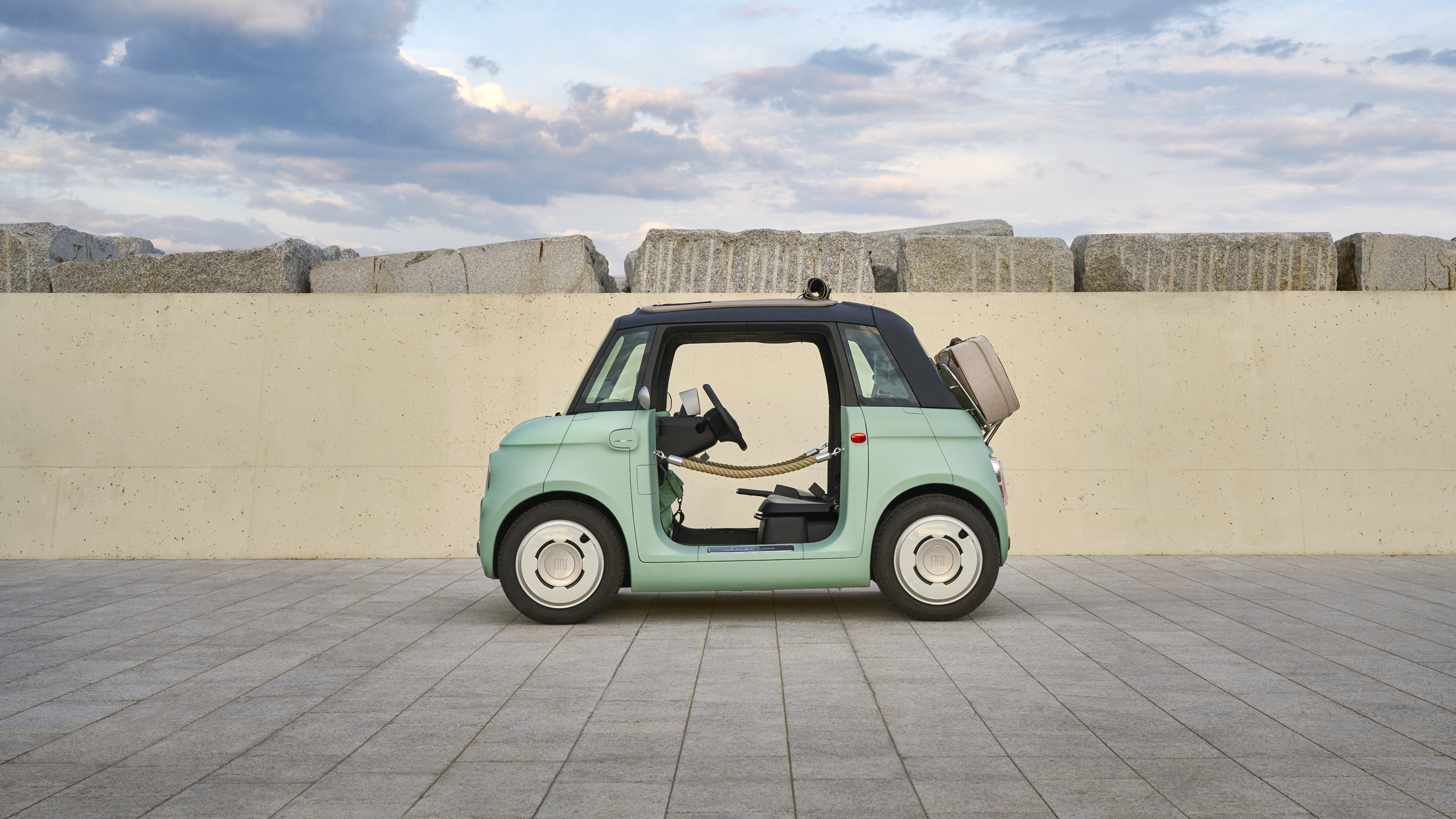 Fiat Topolino infuses every journey with the spirit of la dolce vita
Fiat Topolino infuses every journey with the spirit of la dolce vitaFiat enters the world of electric microcars with the new pocket-sized Topolino
By Jonathan Bell
-
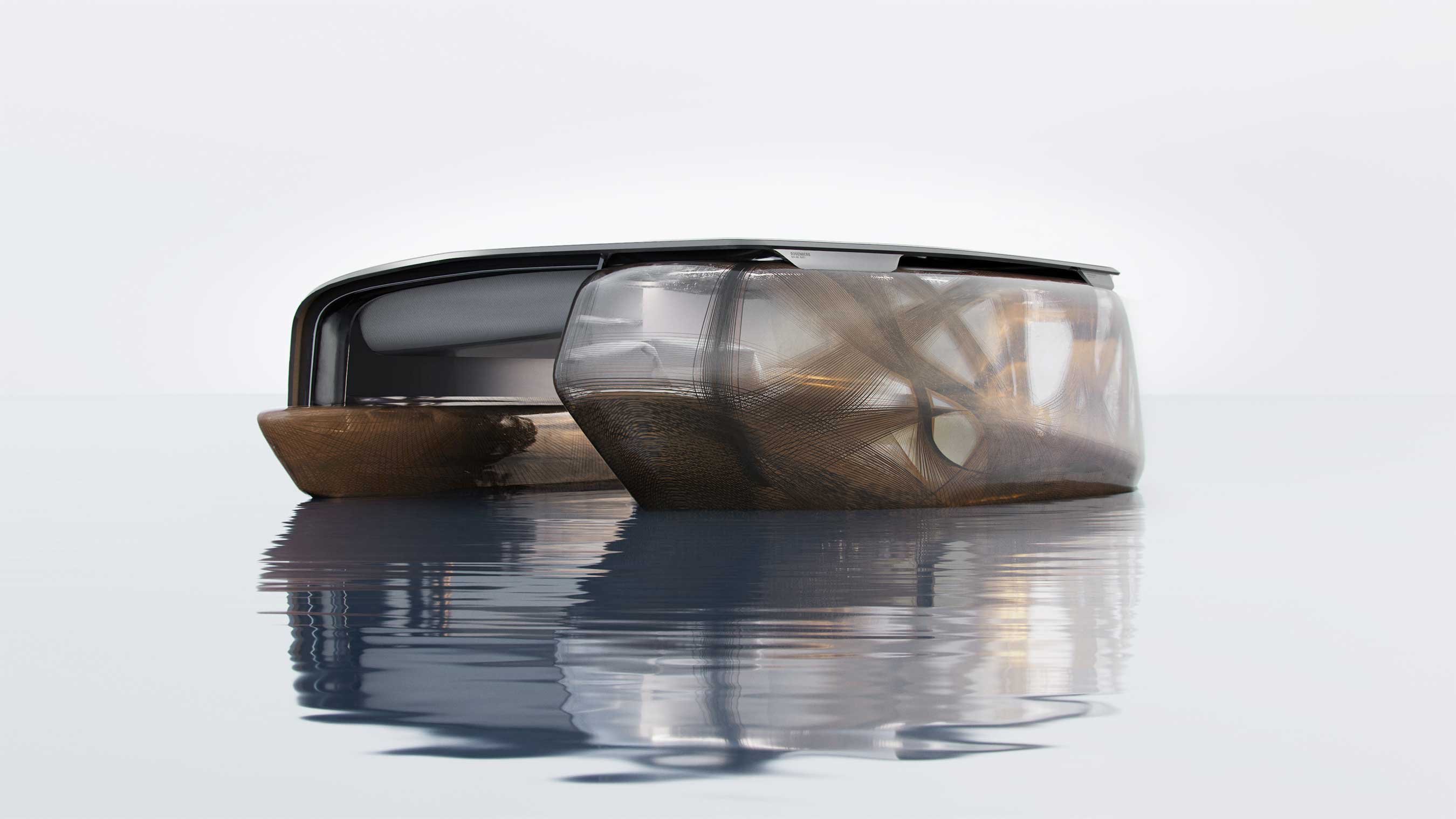 Blue Nomad is a floating habitat shaped by Swiss students and Danish designers
Blue Nomad is a floating habitat shaped by Swiss students and Danish designersInspired by traditional ocean-going vessels, the Blue Nomad Floating Habitat is a prototype dwelling for a drowning world, shaped by students from Rosenberg
By Jonathan Bell
-
 Garage Deluxe will stash your supercars securely for all time
Garage Deluxe will stash your supercars securely for all timeGarage Deluxe customisable underground car parks are part museum, part entertaining space. All you need is the acreage and the automobiles
By Jonathan Bell
-
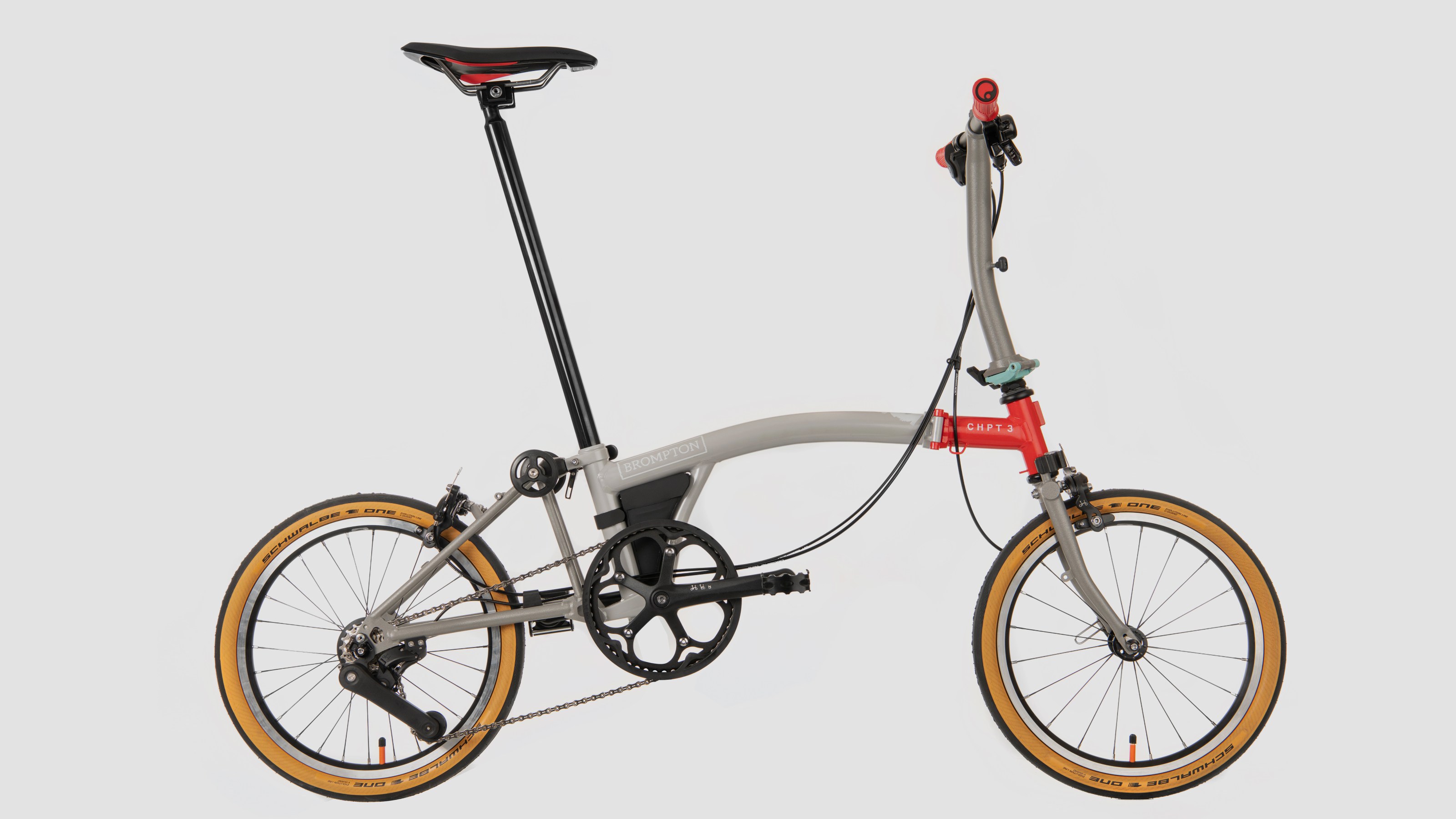 Brompton Bicycle and David Millar’s CHPT3 brand reveal new folding bike
Brompton Bicycle and David Millar’s CHPT3 brand reveal new folding bikeThe Brompton x CHPT3 v4 is a minimalist folding bike fit for the city streets, with Brompton’s signature compact frame, pared back for added performance
By Jonathan Bell
-
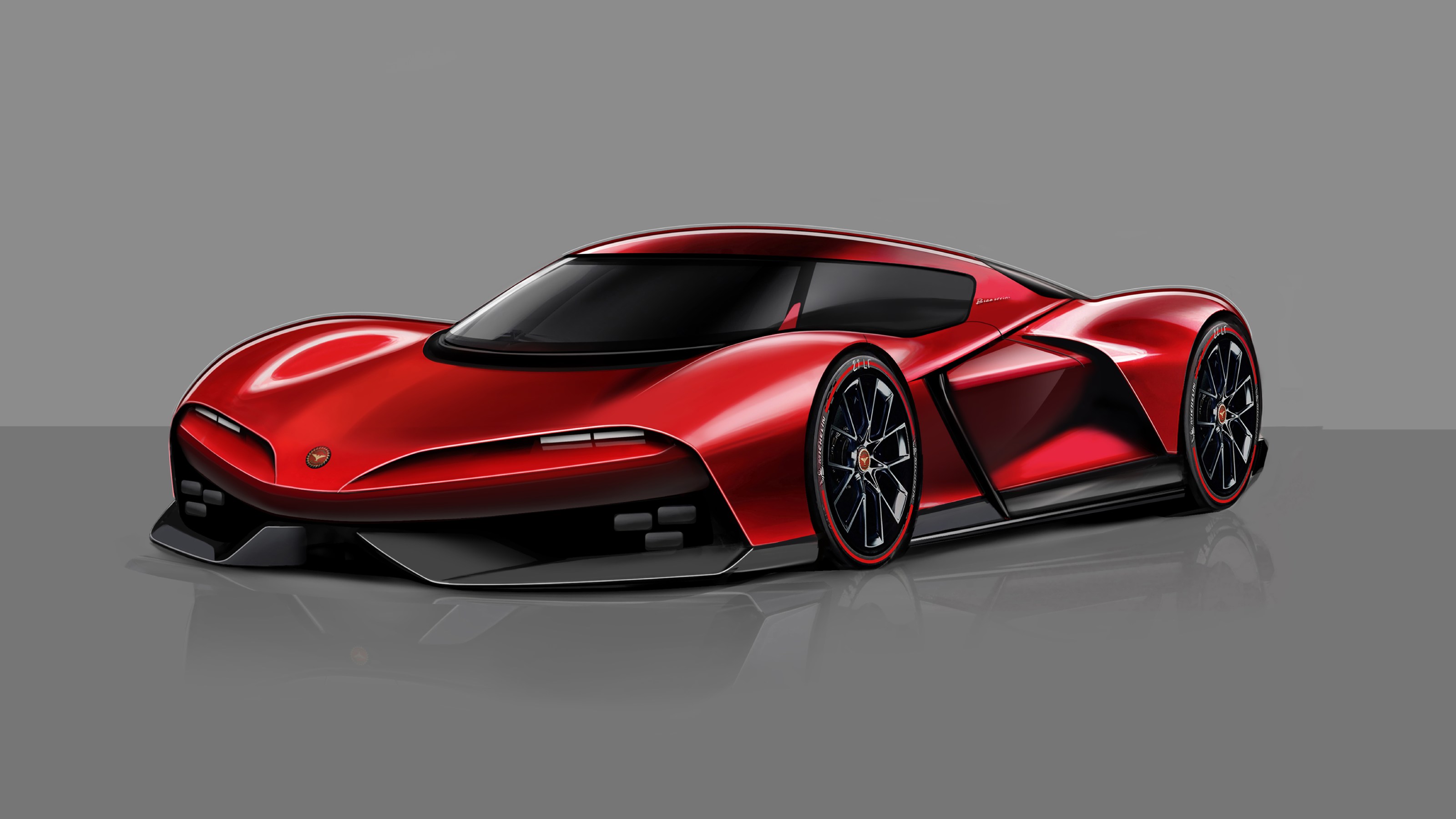 Bizzarrini Giotto is a future-statement supercar from a reborn brand
Bizzarrini Giotto is a future-statement supercar from a reborn brandRepresenting the apex of Italian automotive design, the proposed Bizzarrini Giotto blends heritage with dramatic style
By Jonathan Bell
-
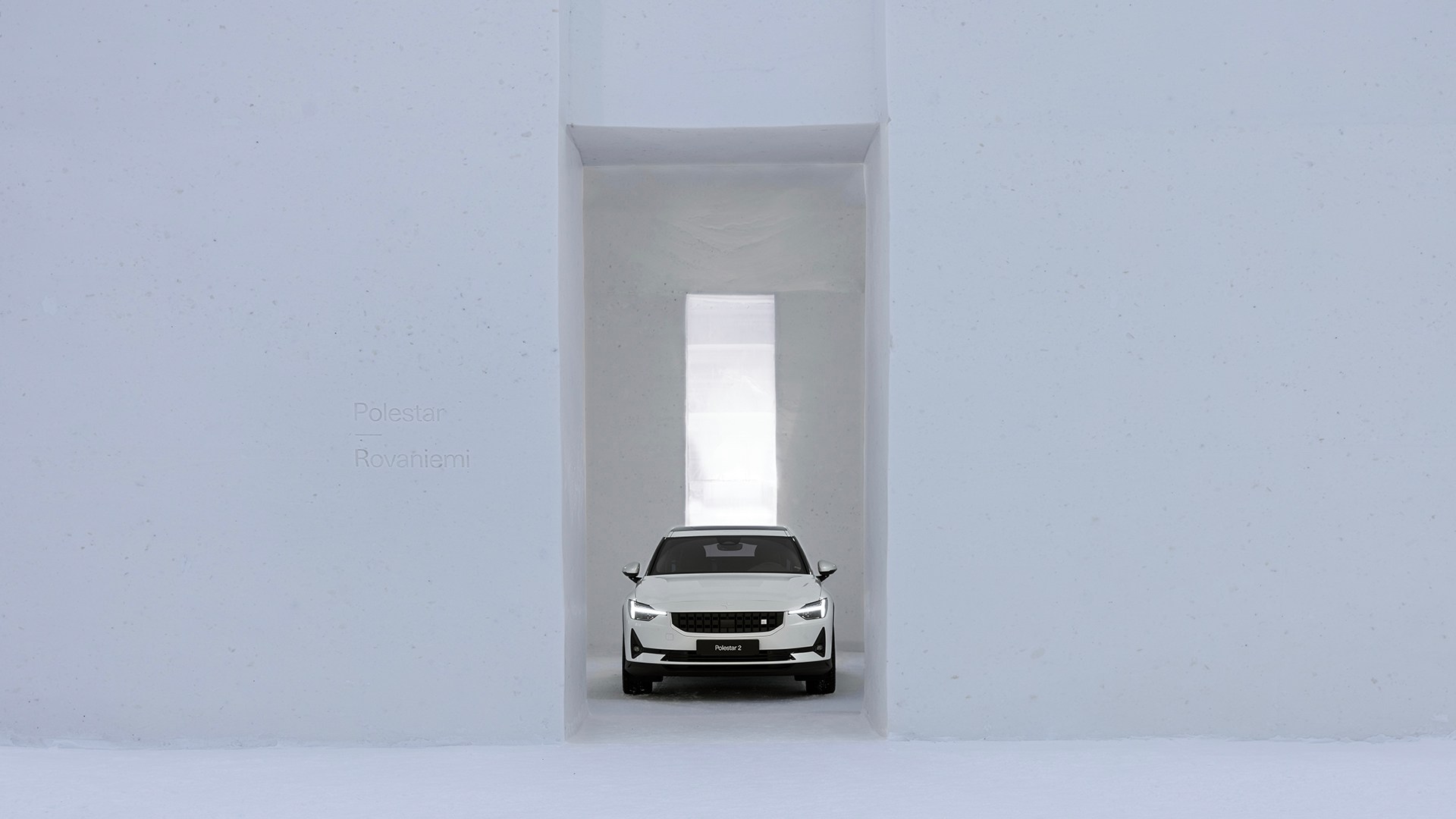 Polestar Snow Space: showroom built of snow joins the Arctic design landscape
Polestar Snow Space: showroom built of snow joins the Arctic design landscapeThe new Polestar Snow Space in Finland is not only a retail showroom, but a temple to architecture, design, engineering and the circular economy
By Naomi Moriyama